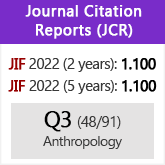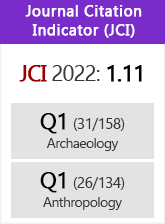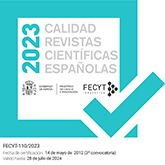A methodological proposal to study the prehistorical metallurgy: the case of Gorny in the Kargaly Region (Orenburg, Russia)
DOI:
https://doi.org/10.3989/tp.1999.v56.i2.277Keywords:
Metallurgy, Slags, Ores, Copper Bronze Age, Srubnaya Culture, Russia, Smelting experimentsAbstract
Archaeological field-work realised at the site of Gorny (occupied from 1700 to 1400 BC) has furnished an important collection of materials related to metallurgical activities (ores, slags, by-products and copper objects). These have been analyzed by a variety of instrumental techniques (scanning electron microscopy, X-ray fluorescence spectroscopy and metallography). The results show that metallurgy was a primitive one that worked oxidised copper ores by a non-slagging smelting process. Cast objects were finished by cold hammering and, on some occasions, annealing. A replication of the prehistoric technology has been achieved by means of on-site smelting experiments. Thus, economic variables such as the efficiency of copper recovery and charcoal consumption have been evaluated and, using them, theoretical models of copper production and its behavioural impact have been constructed.
Downloads
Download data is not yet available.
Downloads
Published
1999-12-30
How to Cite
Rovira, S. (1999). A methodological proposal to study the prehistorical metallurgy: the case of Gorny in the Kargaly Region (Orenburg, Russia). Trabajos De Prehistoria, 56(2), 85–113. https://doi.org/10.3989/tp.1999.v56.i2.277
Issue
Section
Articles
License
Copyright (c) 1999 Consejo Superior de Investigaciones Científicas (CSIC)

This work is licensed under a Creative Commons Attribution 4.0 International License.
© CSIC. Manuscripts published in both the printed and online versions of this Journal are the property of Consejo Superior de Investigaciones Científicas, and quoting this source is a requirement for any partial or full reproduction.All contents of this electronic edition, except where otherwise noted, are distributed under a “Creative Commons Attribution 4.0 International” (CC BY 4.0) License. You may read here the basic information and the legal text of the license. The indication of the CC BY 4.0 License must be expressly stated in this way when necessary.
Self-archiving in repositories, personal webpages or similar, of any version other than the published by the Editor, is not allowed.
















